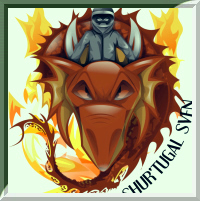
 |
|
Central Europe and Balkans: August-Sept 2016 The Ride that Should Have Been: Mishaps and Hospitals Far Away from Home
In proving foresight may be vain: The best-laid plans of mice and men Often go astray, And leave us nothing but grief and pain, No, little mouse, you have me to say That your plight can carry a day When motorcycling abroad Enough of literary allusions. But they help, as do historic memories. Why should I feel too dismayed when so much premature grief came to the likes of Aristotle, Alexander, Caesar, Richard the Lion Heart, Napoleon; and, well, Toby Price – but, of course, for him by no means terminal. I’ll ride with Toby. The Planned Trip Central Europe and the Balkans: this was to be the pinnacle of almost a dozen overseas motorcycling adventures. This was my plan so meticulously crafted: 8,000km, fifteen countries and six major mountain ranges over forty-seven days. And, just for good measure, Jeremy Clarkson’s declared “best road in the world.” That’s the focal point of his Romanian episode of Top Gear: the Transfăgărășan. Of six participants, five of us would do six countries, three of us would do four and two of us would do all fifteen. The five of us started the ride in Ljubljana, Slovenia, and headed through Austria and the Czech Republic. There was a corner of Slovakia to cross before entering Poland and going back through Slovakia to Hungary. Three of the five left the ride in Budapest and one other joined it. The three of us were then to ride through Romania and Bulgaria to Macedonia, from where the new rider would return with his bike to Ljubljana. Finally, the remaining two of us would venture into the little traversed countries of Albania and Kosovo before taking in Serbia, Bosnia and Herzegovina, Montenegro and Croatia. Every country and stop-over had been researched. The political labyrinth of the Balkans had been explored as thoroughly as personal talents permitted. A detailed, scenic, motorcycle-roads route, with accommodation and travel notes, had been created for us by our supplier and guardian, Adriatic Moto Tours of Slovenia. It was, indeed, a well-laid plan that promised much joy. But it did go astray; and left much grief and pain, at least for me but, thankfully, not for the others, all of whom completed the plan. I got to ride Slovenia, Austria, the Czech Republic and into the north-west corner of Slovakia to about a kilometre short of the Polish border before involuntarily opting out. But more of that drama later. Setting Out in Central Europe Ljubljana, a vibrant and colourful city with a history dating back to Roman times and a bustling central square neatly hugging the Ljubljanica River, provided a near-perfect place to recover from the long journey from Australia, take in some unique sights and atmosphere, and still have time to collect the bikes from Matej at his Adriatic Moto Tours depot. That left nothing to do the following morning except getting up and riding. Austria
Despite a later-than-planned arrival in Graz, owing to a few navigational glitches, we still had time to see some of the wonders of this UNESCO world heritage-listed city before celebrating our first stop-over with fine Italian dining and local wining (yes, Italian – only because it was there). Next day introduced us to the core of the Alps. The climbs, with their twists and turns, would have been exciting enough without encountering road closures at the top of a pass. Thank goodness there were only five of us to debate the options. After some typically alpine riding we approached Salzburg just at that time on a Saturday afternoon when the whole city seemed to be returning from a spectacular day’s outing to whatever summer spots attracted them. It was a slow, hot ride into the city, but well rewarded by the massive impact of the sight of its dominating Hohensalzburg Castle and an evening in one of its highest enclaves enjoying an orchestral concert of Mozart and other Austrian composers. Crossing the Czech border was the next task. Hardly a task. If you weren’t paying attention, you might not have even realised you crossed it. Just before the border, we stopped for lunch at a bakery in a small village, where parishioners were hurrying into their Sunday mass at the village church over the road. Another war memento caught our attention: a small marble war memorial dedicated to both world wars and commemorating fallen soldiers from the village. Emblazoning the memorial was the familiar outline of the Iron Cross. Just a little different to what we’re accustomed to see at such memorials at home. I couldn’t help wondering how many of the soldiers might have died at the hands of our own troops. Czech Republic The first stop-over in the Czech Republic was another UNESCO world heritage Although the Vltava flows to and through Prague, our destination for the following day, we parted company with it to ride a huge eastern loop though forest-covered mountains and across tributaries of the Vltava, finally re-joining it as a beacon leading us to the treasures of Prague. We spent two nights in Prague to allow a full day sightseeing in this city, said to be the equal of Paris in terms of beauty and having the best beer in Europe. From the moment we parked the bikes, there was no holding us back from our own evening walking tour of the old town, taking in the famous Charles Bridge – one of some ten that cross the Vltava in Prague, the spacious and encircling town square and the views of the towering castle across the river; all seductively lit adding a warm atmosphere for the many couples ambling along the cobblestones and across the Charles Bridge.
Little did I know that this would be my last supper on the motorbike tour. It’s a little surreal now looking back and notionally transporting myself into my own body sitting on the square in Olomouc sharing yarns, experiences, food and wine with my four fellow travellers, chaffing at the bit to welcome the morrow and get back on the bike to briefly traverse Slovakia and end up in Krakow, Poland. I’d planned a three-night stopover there to spend a day visiting Auschwitz and a day enjoying Krakow itself.
We duly left Olomouc, crossed into Slovakia and stopped just across the border at a forlorn little restaurant in the village of Makov. In anticipation of preparing a video of our trip, I took the trouble of filming the other riders as they rode from the restaurant towards the well-signposted turn-off to Čadca leading to the Polish border crossing for Krakow. The name Čadca didn’t mean anything to me at the time. We wouldn’t even go through it. The road to Krakow by-passed it. But as I write, it’s as familiar a name as any town abroad or in Australia.
On a slight uphill incline, as we rode pretty much in line, a slow, small car towing a trailer was making its way along the road. The bike in front overtook it. I pulled out to do likewise; and was well into the overtaking lane when the driver abruptly turned across the road to enter a private driveway. Doing so, he put himself right across my bow. There wasn’t much strategic planning going on in my head, I recall. There wasn’t time for that. I think it was instinct-driven self-preservation that had me turn sufficiently to avoid making contact with the larger, hard object that had placed itself dead in front of me. At least I succeeded in doing that; but ended up going full speed (actually it wasn’t that fast, mercifully) into a creek whose bridge across the road was awfully close to where I entered the creek. It’s an horrific feeling to see a vehicle suddenly emerge from seemingly nowhere – in reality, I knew it was on the road in front of me, but its turn was totally unexpected – and know you’ve got few options, if any. I clearly recall saying to myself “oh, no!” It’s a bit depressing when looking at photos taken after the event and particularly the site in Google maps to see that, at least in theory, turning into the driveway ahead of the car might have been a safe escape. But it all happened in something akin to a nanosecond. It seemed so, anyway. Not having bumped my head – so no concussion – I clearly recall, in addition to going into the undergrowth and down the bank of the creek, the immediate aftermath: ending up separated from my bike, sitting up in the bottom of the creek in its slowly flowing water in considerable pain; Hondo, the rider immediately behind me, scrambling down the embankment, having to fight his way through thick (and prickly, as I later found out) undergrowth, and encouraging me with soothing comments; discussing with my friends contacting my travel insurance company (and telling them where the papers were) and contacting family at home; eventually (but fairly promptly) being engaged with the investigating police officer, Miloš (Mil-osh), – I remember reading his name on his shirt and calling him by name; and the paramedics having trouble getting their stretcher down the encumbered embankment. I guess they dosed me up soon after reaching me. Hondo told me later he and they had a discussion about my weight, height etc. as they calculated the dose they would deliver. Perhaps, fortunately, I don’t recall being lugged up the embankment; but I can recall being in the helicopter as it took off for the hospital in Čadca. My next recollections are in the Intensive Care Unit (ICU) of Čadca Hospital. Čadca Hospital Čadca is a district town of only about 25,000 (2010 census) – so maybe about the size of Alice Springs. The good news was that the hospital obviously serves a much bigger catchment area so was better equipped than one that might expect if it was serving only a town of Čadca’s size. It dated from the Communist era; and seemingly well back into it. Its architecture, plumbing, inside fit-out, lifts and a deal of its equipment all spoke of a bygone era. However, it was well-endowed with the latest CT scanning equipment; and medical and nursing staff were obviously well trained. By the time I became a little more compos mentis in the ICU, I had obviously been through a CT scan because I had already been diagnosed with multiple rib fractures, a fractured clavicle (collar bone) and collapsed lungs. I had tubes emanating from each side of my chest draining intrusive fluid from my lungs and was hooked onto an oxygen supply. One thing I wasn’t doing was moving; not an inch or centimetre. So long as I stayed still I could limit the pain from the fractured ribs and focus on the challenge of steady breathing. From Facebook Friend to Hospital Visitor Can’t be too critical of social media. It was instrumental in my having my sole visitor over twenty-six days in hospital (apart from my riding companions who stayed in Čadca overnight to make sure I was settled and okay). Alex is a Facebook friend who lives in Krakow, about 150km from Čadca. He’s Ukrainian whose permanent home is Kiev. He and his then partner, Lyudmila, who is Russian, were on their own motorcycle adventure riding from Kiev to Magadan on the Russian Far East coast of Siberia when they met up with riders on the Compass Tour from London to Magadan. That was a few years back. They all rode together for the last six days into Magadan, with Alex and Lyudmila helping the Compass team with language and other problems. I “met” them through a friend who was on the Compass tour. Alex and Lyudmila had their own travel Facebook page which caught my interest. Time moves on and life changes. Alex and Lyudmila parted company. Alex returned to Kiev and Lyudmila stayed in Magadan, her home town. Eventually, Alex married; and Maria and he have brand new twins. They moved to Krakow a year or so back for Alex’s work. Alex and I planned to meet while we were in Krakow. That didn’t happen. A little later I sent him a message explaining why I hadn’t turned up. Not to be deterred, Alex and Maria made a weekend visit from Krakow to Čadca to visit me, bringing a much-appreciated cache of goodies – a very welcome supplement to the hospital’s ascetic fare.
Being in a pretty sorry state – I suspect it was the collapsed lungs that were the main contributor to my lingering incapacity – nothing much seemed important other than staying still and quiet; and waiting it out. I slept a lot, which helped pass the time; more during the day than at night, which made the nights long, slow and annoyingly uncomfortable. The worst time of day was the morning sheet-changing and bed-bath. As I was rolled from side to side during the process, it seemed that every broken rib – some still attached to the sternum; some detached through breaks in the cartilage – screamed out their objection to being disturbed. I’m not sure I’ve ever felt anything like it before. Slowly, good things were happening, although I mostly didn’t appreciate that until much later reading my notes from the time. I had a few scans over the first week or so. Improvement in my lungs became evident so that on Day 7, one of the two draining tubes from the side of my chest was removed (and the hole stitched up). On Day 8, they got me sitting on the side of the bed, standing and taking a few steps – with a nurse on each side. Sitting up drained 300mls from my lungs so increasing capacity by 300cm3. That was a big leap forward.
Leaving the ICU, although indicative of much wanted and appreciated progress, was like leaving friends and family. Everyone was coming over and saying goodbye and offering best wishes. I was asked to email to let them know that I got home safely. Several made me promise that when I come back to complete the tour I'll call in to say 'hello'. Although there were restrictions on engaging fully with nursing staff because of the communication barrier, everybody was very caring, kind, attentive and supportive. The nurses in ICU in particular showed this from the efficient and sensitive way they administered their duties to the gentle way some would caress my cheeks with the backs of their fingers or brush my hair back, at least notionally as there’s not much there to brush back. The standard of care and concern was no less in the trauma ward. In both places we would always find ways to break down communication barriers. One of my lingering memories will be how amazingly blissful can be the smallest of comforts in the right circumstances: droplets of water in a parched mouth; being rolled onto my back at the seemingly never-arriving completion of the excruciating daily process of sheet changing; the first natural pee after the catheter was removed (in contrast to scrubbing of my legs during a bed-bath, flicking away the invading catheter which then sent an exponentially increasing wave of movement to its far end); the first sitting sideways on the edge of the bed with legs dangling over and eventually sitting in a chair; the first cup of tea even though weak and barely tepid. And so much more. I was eventually declared well enough to make the journey home. The main issue had been waiting for the lungs to reach a stage where a long-haul, high altitude flight was safe. So, on Day 26, I briefly returned to the ICU to make my final farewells – and was greeted like a long-lost brother; said good-bye to the trauma ward staff and set out for home. I can’t deny I felt a touch of nostalgia as I rode down the rattling lift with only manually operated exterior doors and no inner doors; when I walked out through the ambulance bay where I would have arrived from the helipad; and when I looked back at the imposing if stark Communist-era architecture that houses the hospital. But it was time. Insurance Ah, travel insurance. Never leave home without it, as they say.
On the positive side, it was comforting to get a phone call soon after hospitalisation from the insurance company checking on me, offering good wishes and providing supportive comments. On the other hand, despite being confident that my insurance was in order and fully covered my medical and hospital situation, it was disconcerting to be told several times that no confirmation of “coverage” could be given until certain boxes had been ticked by the insurance company; and this news was being received while in a state of some consternation over injuries. They needed the police report, the bike rental agreement, a copy of my licence and a few other things that now slip my memory. This went on for too long from the perspective of someone coping with the pain and mental trauma of a serious accident. I guess the insurance company has its processes; and in the end there wasn’t a problem. The moral of the story, though, is to make sure and be confident that your insurance covers you for what you need and want before embarking on an overseas tour – or any overseas trip for that matter.
What I had overlooked were subsidiary issues such as the excess on the comprehensive insurance provided by the bike hire company and the costs of returning an injured bike to the depot. These are matters covered by all travel insurance companies for most four-wheeled vehicles but not necessarily for two-wheeled vehicles. There wouldn’t have been much I could have done about in any event. In subsequent research I found only one company that covers these aspect for motorbikes; and it’s likely that will change when the company’s agreement with its underwriter is eventually revised.
It’s fundamental that a prospective motorcycle tourer check the current Product Disclosure Statement of the company whose policy is being considered; and, in addition, check for updates or revisions. These are usually printed as an addendum to the PDS. Readers might find it helpful to check the results of some reasonably extensive research I undertook on return from my truncated tour. You can find it here. The PDF document referenced at the end of the page has a detailed analysis of what various travel insurance companies offer.
That’s a hard one to answer. I’m not deterred from getting back on the bike. Toby Price will – and has done so in the past after a much worse experience. But I’m no Toby Price, so it may take me a bit more time with a lot more caution. But it will happen. Just need a bit more resilience at the fracture repair points and a bit more fitness. As for completing the planned trip, in the words of one well-known Central European, “I’ll be back.” |
 It was open, flat and bright green countryside that drew us, fresh and expectant, into the foothills of the Austrian Alps and onto the university town of Graz, Austria’s second largest city; but not before going through Bleiburg, whose name is infamously associated with the repatriations at the end of the second world war of tens of thousands of former Axis-allied Croatian soldiers and civilians to the Serbian partisans. Thousands were murdered or sent to forced labour camps.
It was open, flat and bright green countryside that drew us, fresh and expectant, into the foothills of the Austrian Alps and onto the university town of Graz, Austria’s second largest city; but not before going through Bleiburg, whose name is infamously associated with the repatriations at the end of the second world war of tens of thousands of former Axis-allied Croatian soldiers and civilians to the Serbian partisans. Thousands were murdered or sent to forced labour camps.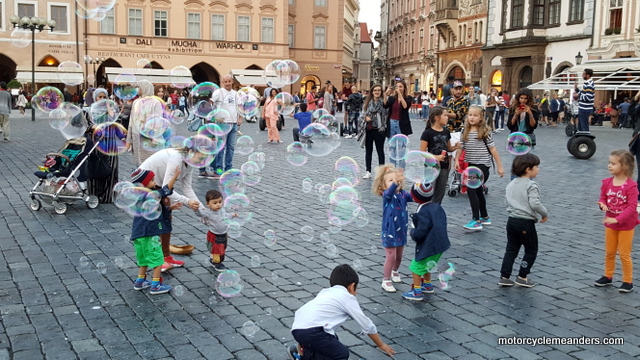 town: Cesky Krumlov. And what a gem it is. A compact thirteenth century town nestled tightly into a horse shoe bend of the Vltava River – the Czech national river made more famous by Smetana’s great symphonic Ma Vlast (My Homeland), one of whose parts is Vltava, capturing the flow and characteristics of the river from its source near Cesky Krumlov to its mouth further north. Just outside the horse shoe, across the river is the town’s over-sized castle casting its controlling shadow on the old town.
town: Cesky Krumlov. And what a gem it is. A compact thirteenth century town nestled tightly into a horse shoe bend of the Vltava River – the Czech national river made more famous by Smetana’s great symphonic Ma Vlast (My Homeland), one of whose parts is Vltava, capturing the flow and characteristics of the river from its source near Cesky Krumlov to its mouth further north. Just outside the horse shoe, across the river is the town’s over-sized castle casting its controlling shadow on the old town. 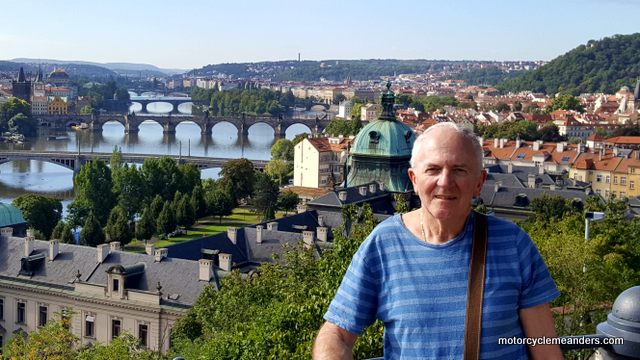 Our day in Prague began with the novel experience of a private Segway tour; after first being taught how to control this unfamiliar form of a two-wheeled vehicle. It wasn’t long before we ventured further with our guide and crossed over to the old Jewish Quarter of Prague, which shared haute couture retail houses with the ancient synagogue and cemetery of a long past period in Prague’s history. On the other side of the river, the Segways easily carried us to the heights of the Prague Castle and its neighbouring palaces and parks. Our guide promised a coffee stop, which turned out to be our first sampling of the renown Czech beer! The rest of the day was comfortably and fascinatingly spent immersed in everything Prague.
Our day in Prague began with the novel experience of a private Segway tour; after first being taught how to control this unfamiliar form of a two-wheeled vehicle. It wasn’t long before we ventured further with our guide and crossed over to the old Jewish Quarter of Prague, which shared haute couture retail houses with the ancient synagogue and cemetery of a long past period in Prague’s history. On the other side of the river, the Segways easily carried us to the heights of the Prague Castle and its neighbouring palaces and parks. Our guide promised a coffee stop, which turned out to be our first sampling of the renown Czech beer! The rest of the day was comfortably and fascinatingly spent immersed in everything Prague.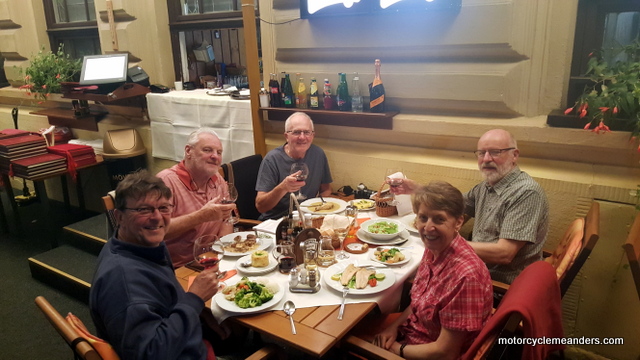 Leaving Prague – and only up to the 6th day on the road – we made our way across Bohemia and into the old Moravian lands to their historic capital of Olomouc. Its main attraction – and a worthy one – is its largest square with the UNESCO world heritage Holy Trinity Column. A very pleasant dinner on the perimeter of the square, with a full view of the City Hall and the Trinity Column quietly fading from the glow of the setting sun, capped off another absorbing day.
Leaving Prague – and only up to the 6th day on the road – we made our way across Bohemia and into the old Moravian lands to their historic capital of Olomouc. Its main attraction – and a worthy one – is its largest square with the UNESCO world heritage Holy Trinity Column. A very pleasant dinner on the perimeter of the square, with a full view of the City Hall and the Trinity Column quietly fading from the glow of the setting sun, capped off another absorbing day.
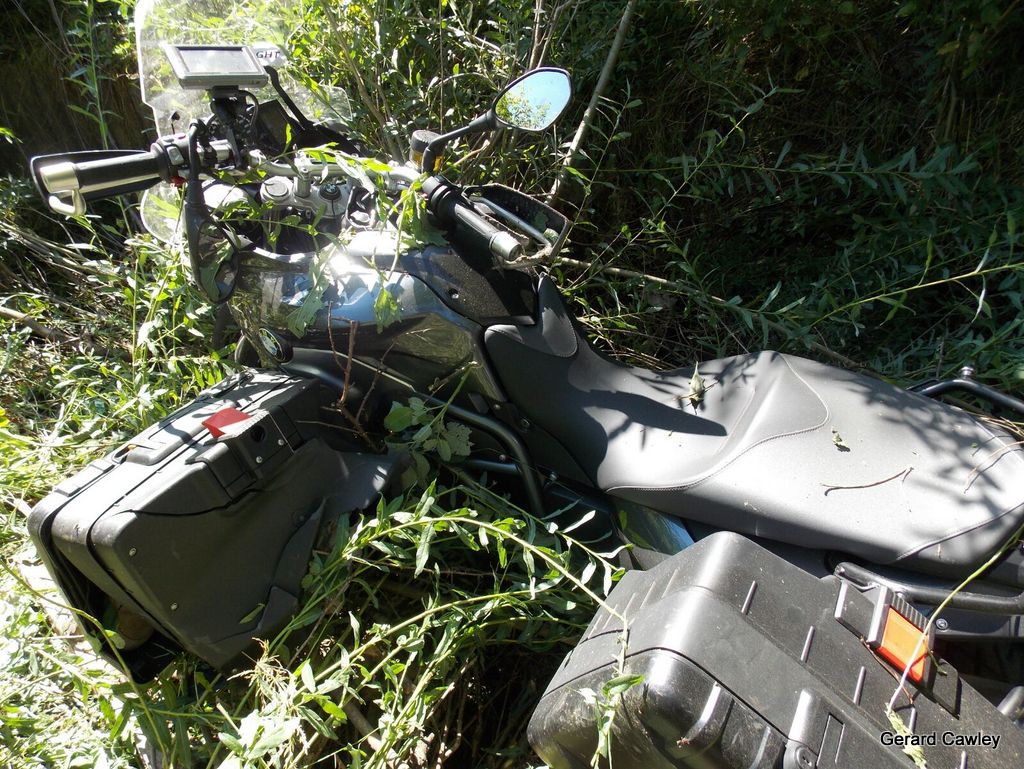 Forget Čadca for a minute. We were negotiating some major construction works of an overhead motorway and so were riding cautiously on a lesser road that wound its way through the construction before breaking out into more open country and passing a sign indicating the Polish border was a couple of kilometres ahead. I recall being excited in anticipation of crossing this particular border. But it was not to be so.
Forget Čadca for a minute. We were negotiating some major construction works of an overhead motorway and so were riding cautiously on a lesser road that wound its way through the construction before breaking out into more open country and passing a sign indicating the Polish border was a couple of kilometres ahead. I recall being excited in anticipation of crossing this particular border. But it was not to be so.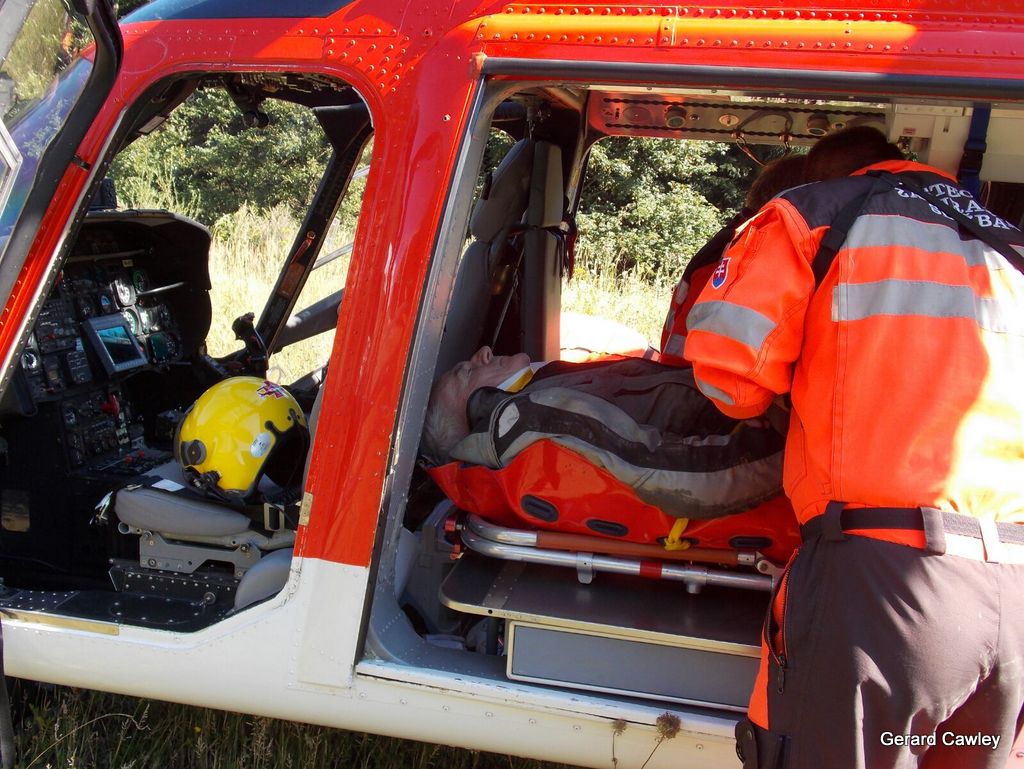

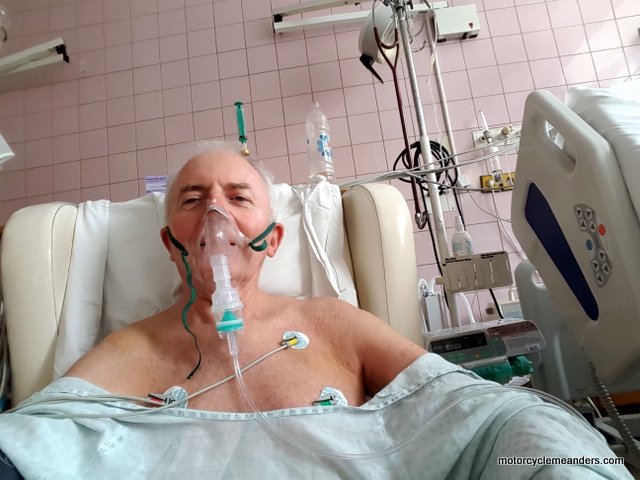
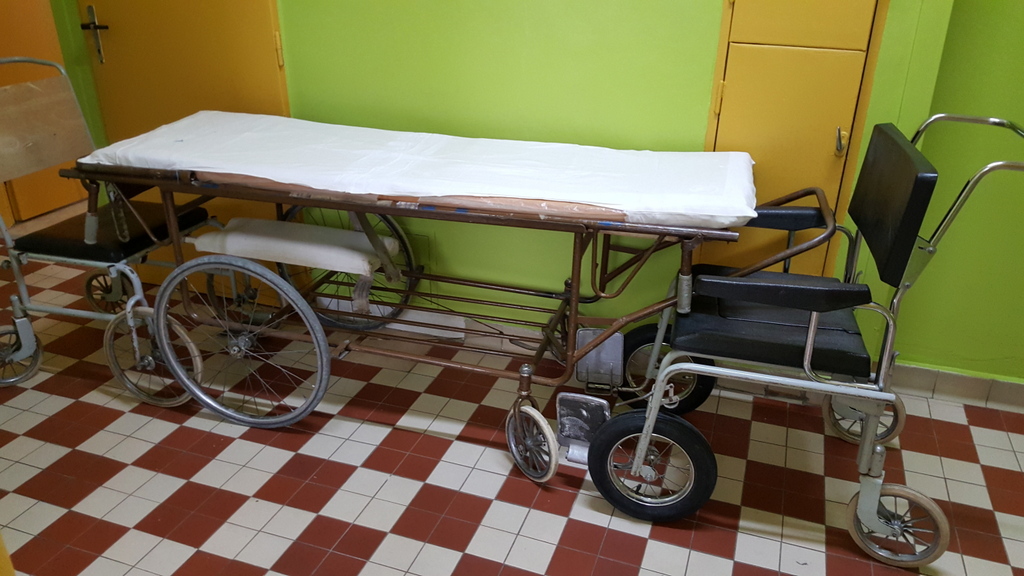 By Day 12, I was sufficiently mobile, walking several metres, both draining tubes out, that I was moved out of ICU to a trauma ward, where I further mended and recuperated for another two weeks, allowing more strength in ribs and clavicle; and lots of exercises to increase lung capacity.
By Day 12, I was sufficiently mobile, walking several metres, both draining tubes out, that I was moved out of ICU to a trauma ward, where I further mended and recuperated for another two weeks, allowing more strength in ribs and clavicle; and lots of exercises to increase lung capacity.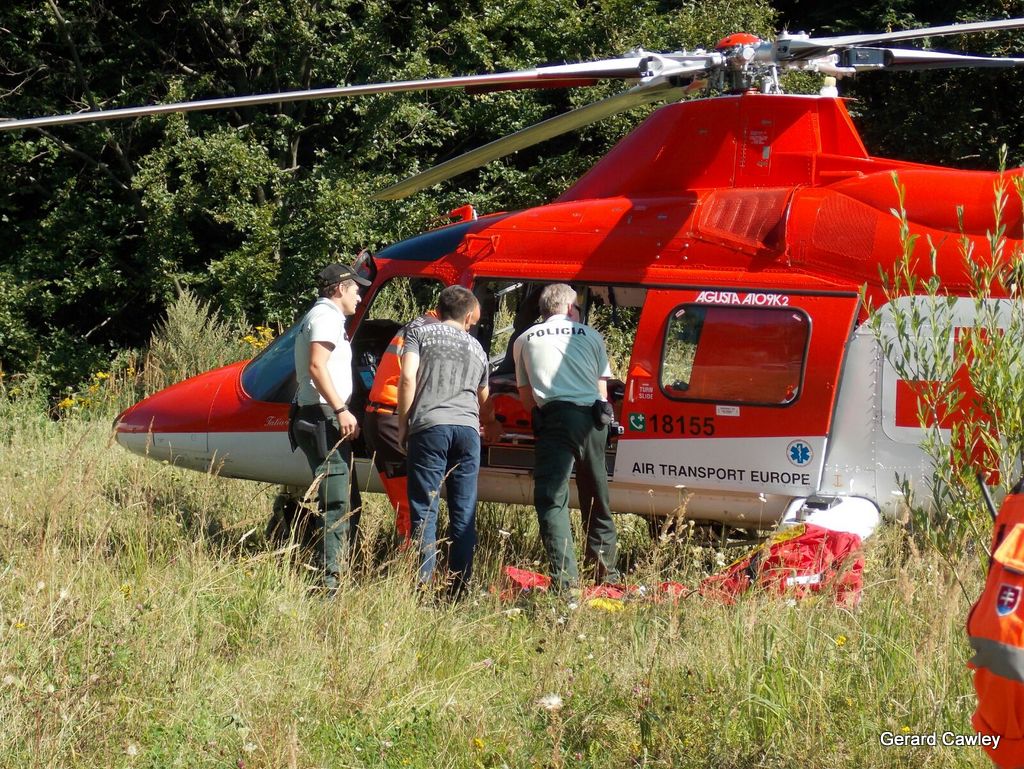
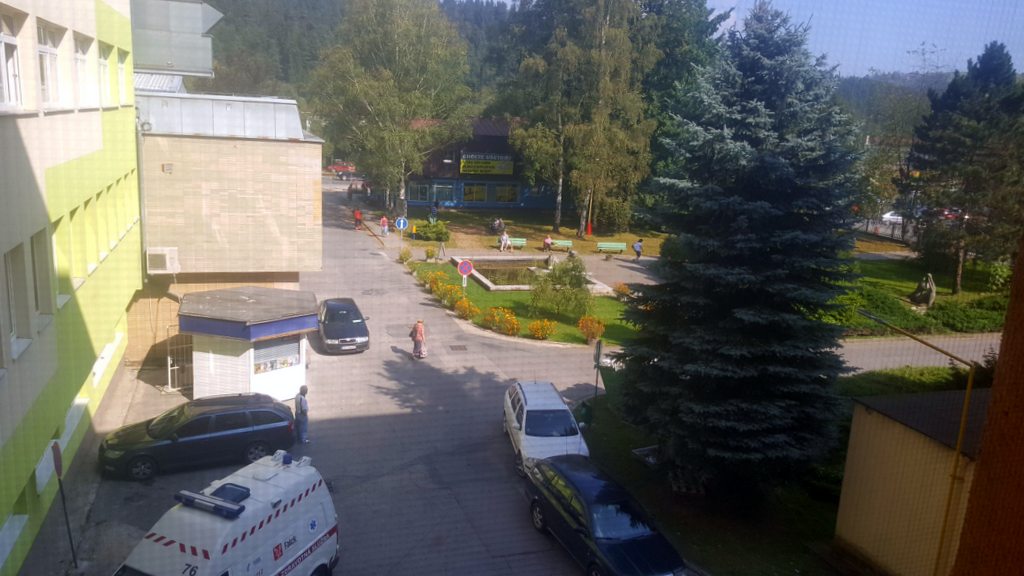 Fortunately, I never have. And you would never want to. After several overseas tours and hundreds of dollars of claim-free insurance premiums, my day of consolation had arrived.
Fortunately, I never have. And you would never want to. After several overseas tours and hundreds of dollars of claim-free insurance premiums, my day of consolation had arrived. 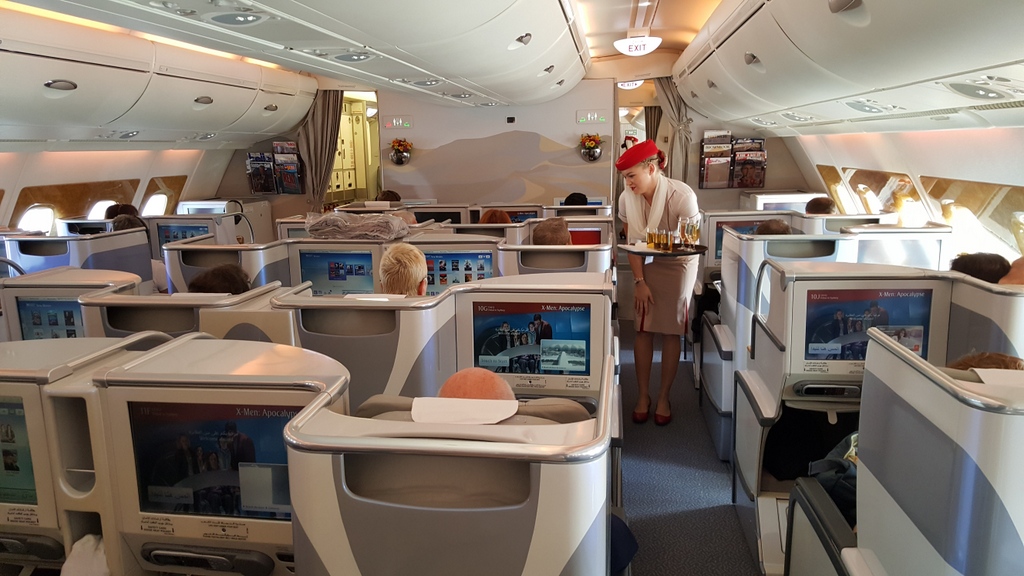 What I have found is that there are several companies that will cover motorcyclists on any size bike; more than I expected to find. However, as mentioned above, there are many that won’t. There is also a range of issues and exceptions relating to motorcycle use across companies. To further complicate the situation, there are variations in the travel insurance policies of several companies who all have the same underwriter.
What I have found is that there are several companies that will cover motorcyclists on any size bike; more than I expected to find. However, as mentioned above, there are many that won’t. There is also a range of issues and exceptions relating to motorcycle use across companies. To further complicate the situation, there are variations in the travel insurance policies of several companies who all have the same underwriter.